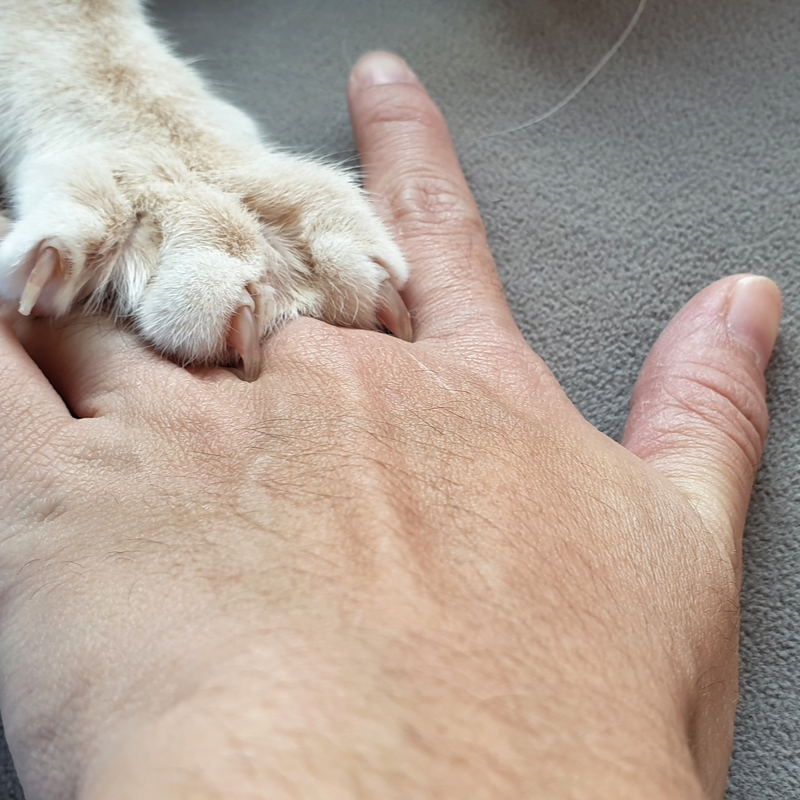
What are Bartonella koehlerae pathogens?
Bartonella koehlerae are bacteria of the Bartonella genus. They are described as a human pathogen that can cause culture-negative endocarditis . The Bartonella koehlerae pathogen could be isolated from domestic cats as well as from a stray cat population in Israel .
How could the Bartonella koehlerae pathogen be diagnosed?
Bartonella koehlerae could be discovered in the valve tissue of an endocarditis patient . The isolation was carried out by DNA sequencing and PCR diagnosis. Two Bartonella genes were identified: the gene for citrate synthase ( gltA) and the gene of riboflavin synthase ( ribC ).
The isolation of the Bartonella koehlerae pathogens was also successful in the cat by isolating the pathogen from the animal's blood. For this purpose, cat blood was obtained from the stray cat in Israel, which was anaesthetised for castration . The blood was inoculated with EDTA in a 2 ml tube and then frozen at -80 °C until the time of plating. In addition, one hundred microlitre aliquots of the thawed blood were cultured on chocolate blood agar plates for up to eight weeks.
In another study from 1999, Bartonella samples, which were collected from domestic cats in the San Francisco Bay Area, two samples that were different from the previously known Bartonella henselae pathogens. The scientists identified the samples as a new species of Bartonella and named it Bartonella koehlerae, noting that it is genetically closest to the B. henselae pathogen .
What are the histological characteristics of the Bartonella koehlerae pathogen?
The Bartonella koehlerae pathogen lacks sequences in the prophage as well as the genomic islands. Furthermore, Bartonella koehlerae displayed an intermediate retention pattern of both coding and non-coding sequences. Phylogenetic analyses conclude that Bartonella koehlerae is an early divergent sister group of the Bartonella henselae pathogen.
How could the Bartonella koehlerae pathogen be detected in humans?
The Bartonella koehlerae pathogen was first diagnosed in a 60-year-old man from Israel. He had frequently fed stray cats and complained of prolonged fever and fatigue. In the course of the disease, the man developed endocraditis, i.e. an infection of the inner lining of the heart. In the course of an analysis of samples of the man's heart valves, Bartonella henselae, pathogen of the so-called cat-scratch disease, but also Bartonella quintana, pathogen of the so-called trench fever, could first be detected. A further analysis of the bacterial sample revealed that it was not Bartonella henselae at all, but the genetically similar pathogen Bartonella koehlerae. To avoid confusion of the two Bartonella species in future, DNA sequencing should be carried out on PCR-positive samples.
Bartonellosis as an increasingly recognised zoonosis
Bartonellosis, or feline disease, is the most common zoonotic infection caused by Bartonella pathogens, such as B. henselae, but also B. koehlerae. Thereby, among the many mammals, especially cats infected with Bartonella represent a large reservoir for human infections.Cats infected with Bartonella are usually asymptomatic. Nevertheless, treatment is recommended for the cat if it lives with immunocompromised individuals. If healthy people have been infected with Bartonellosis, they do not necessarily have clinical symptoms. Many people have antibodies, so that the disease resolves spontaneously without treatment.
In order to contain the clinical picture of Bartonellosis in the future, it is essential to educate people about the zoonotic risk of Bartonella pathogens . This is especially true for pet owners.
How is the Bartonella koehlerae pathogen transmitted?
The Bartonella koehlerae pathogen has now been detected not only in humans, but also in cats and, more rarely, in dogs from Israel and the USA. In the dogs, the pathogen could be isolated from DNA samples of blood and mitral valve tissue by means of molecular studies. The role of the dog in the transmission of the disease to humans could not yet be clearly clarified .
Scientists assume that fleas are considered vectors for the bacterium to cause culture-negative endocarditis in humans. Transmission by cat fleas occurs mainly through infected flea faeces. In the course of time, however, new potential vectors have also been identified. These include ticks and biting flies.
How can one protect oneself from a Bartonella koehlerae infection?
The only successful preventive measure so far is strict flea control . Currently, there is no vaccine that can prevent Bartonella infection, but the following safety precautions should be followed by pet owners:
- Immunocompromised people should preferably get a cat that is older than one year, enjoys good health and is flea-free. It should not come from a shelter or a multi-cat household, to exclude contact with cats of unknown health status.
- Strict flea and tick control should always be carried out on the cat.
- Rough playing with the cat should be avoided to avoid being scratched.
- If a scratch or bite does occur, the wound should be cleaned immediately with soap and water.
- The cat should be kept indoors to prevent contact with fleas or other vectors.
What symptoms can a Bartonella koehlerae infection cause?
The following clinicopathological symptoms have been observed in dogs infected with Bartonella koehlerae:
- a mitral endocarditis (this mainly affects the mitral valve),
- a skin infection,
- a haemangiosarcoma, i.e. an intracardiac tumour of the dog, which is preferentially located in the right atrium or the right heart ear.
